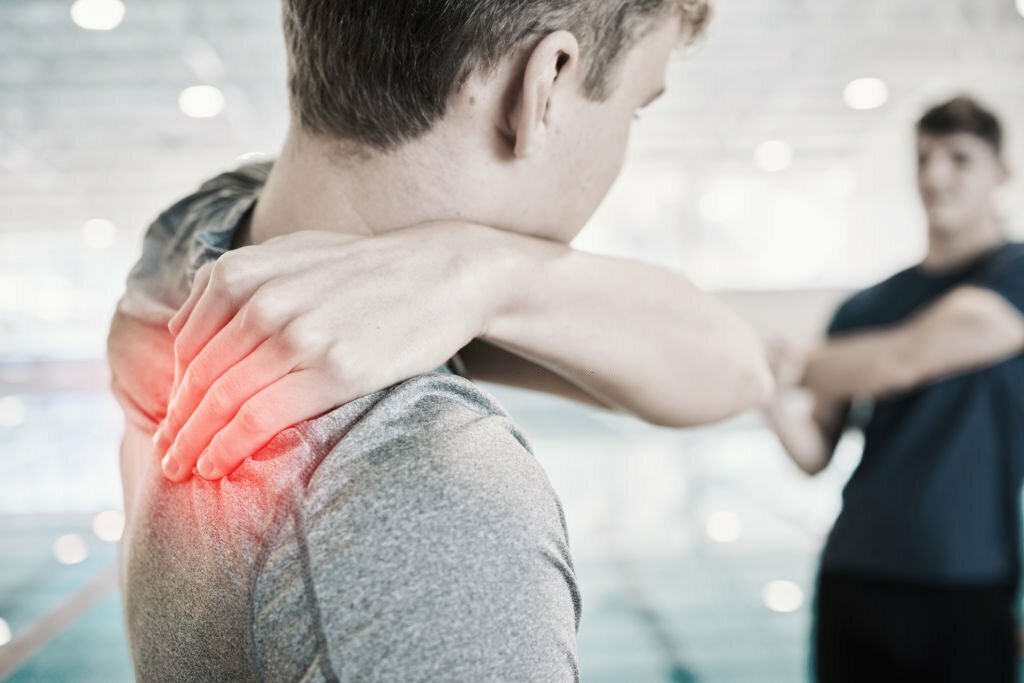
Table of Contents
ToggleIntroduction:
Exercise brings a world of benefits, but it can also bring something we don’t want: injuries. In this guide, we’ll learn about these pesky hurdles that sometimes come with staying fit and healthy. By understanding how to prevent and treat these common exercise-related injuries, we can keep pursuing our fitness goals without the setbacks.
Exercise-related injuries happen when we’re doing physical activities. They can be small like a muscle pull or more serious like a fracture. We’ll talk about easy ways to keep these injuries away so we can enjoy our workouts without worry.
From warming up properly before starting, to being patient and letting our bodies slowly get used to more exercise, there are simple steps we can take. Plus, we’ll look at the usual suspects like sprains, strains, and even that bothersome runner’s knee. Learning how to deal with these can make a big difference in staying injury-free.
Let’s dive into ways to prevent and treat these exercise-related injuries, so we can all keep moving and feeling great!
Understanding Exercise-Related Injuries
Before we start talking about how to stop and fix these pesky injuries from exercise, let’s understand what they actually are. When we’re active, doing all sorts of physical stuff, sometimes our bodies can get hurt. These are called exercise-related injuries. They come in all shapes and sizes—some are just a little pain, while others can be more serious and need lots of care. Think things like sprains (ouch!), strains, muscle pulls (not fun), and even broken bones like fractures.
You see, when we’re playing sports or doing workouts, our bodies can sometimes get a bit too much stress or movement. That’s when these injuries show up. They can make it hard to keep doing what we love, like running or playing basketball.
But hey, it’s not all bad news! There are ways to make sure these injuries don’t bother us too much. By knowing how to take care of ourselves and being careful with how we move, we can help keep these injuries away. So, let’s figure out how to stop them and fix them if they sneak up on us!.
Prevention is Key
Proper Warm-up: Begin your workout with easy exercises to get your muscles and joints ready. This warm-up helps your body get ready for more intense activities and lowers the chances of getting hurt.
Gradual Progression: Take your time! Gradually make your workouts harder and longer. Rushing can lead to injuries, so it’s important to increase how hard and how long you exercise bit by bit to keep your body safe and strong.
Correct Techniques: Knowing the correct way to move lowers the chance of getting hurt. By learning the right techniques for exercises, you protect your body from injuries and make sure you’re doing things in the safest way possible..
Rest and Recovery: Let your body rest and recover. Taking breaks between workouts or when you feel tired helps your body heal and get stronger. This way, you’re ready for more exercise without getting hurt.
Appropriate Gear: Put on the right shoes and gear. Choosing the proper equipment safeguards your body while exercising. It keeps you safe from injuries and helps you focus on enjoying your activities without worrying about getting hurt.
Common Exercise-Related Injuries
Sprains and Strains: These occur due to overstretching or tearing of ligaments (sprains) and muscles/tendons (strains). First aid measures include rest, ice, compression, and elevation (R.I.C.E.).
Runner’s Knee: This knee pain, called runner’s knee, happens from doing the same movements a lot. Taking rest, using knee braces, and doing exercises to make leg muscles stronger can ease this pain and help it get better.
Shin Splints: Shin splints cause pain along the shinbone because of too much use. Wearing good shoes and slowly making exercises tougher can help stop this pain from happening in the first place.
Muscle Pulls and Tears: Muscle pulls or tears happen when we move suddenly or do too much. To help them heal, take it easy, use ice, and do gentle stretches. These steps can make a big difference in feeling better.
Treatments and Recovery
Rest: Allow your body time to heal.
Ice and Heat Therapy: Alternate between cold and warm treatments to reduce pain and inflammation.
Physical Therapy: Specific exercises to regain strength and flexibility.
Medication: Over-the-counter pain relievers can alleviate discomfort, but consult a doctor first.
Professional Help: Seek advice from a physiotherapist or sports medicine specialist for severe injuries.
Conclusion
Staying fit and active is awesome, but sometimes our bodies can hit some roadblocks along the way—those sneaky exercise-related injuries! We’ve learned a lot about how to prevent and treat them so we can keep chasing our fitness dreams without any bumps in the road.
Recall that maintaining our physical well-being is crucial. Starting with easy exercises, taking it slow, and learning the right moves all help in staying injury-free. And if an injury does pop up, the R.I.C.E method (rest, ice, compression, and elevation) can be a big help at the beginning.
But hey, it’s not just about avoiding injuries. Wearing the right gear and giving our bodies time to rest and recover are like superheroes in keeping us safe during workouts. And when we do get hurt, knowing how to treat ourselves with care makes a huge difference in getting back on track.
So, let’s keep moving, keep learning, and keep having fun with our exercises! By being careful, patient, and kind to our bodies, we can enjoy all the amazing benefits of staying active without those pesky injuries getting in our way.
FAQs
Q1: What are exercise-related injuries?
A: Exercise-related injuries happen when we strain or hurt our bodies during physical activities, like sprains, strains, or muscle pulls.
Q2: How can I prevent exercise-related injuries?
A: Start slowly, warm up before exercising, learn the right techniques, wear proper gear, and give your body time to rest and recover.
Q3: What should I do if I get an exercise-related injury?
A: Remember R.I.C.E. (Rest, Ice, Compression, Elevation) at first. If it’s serious or lasts, get advice from a doctor or physiotherapist.
Q4: What are some common exercise-related injuries and their treatments?
A: Common ones include sprains, strains, runner’s knee, and shin splints. Treatments often involve rest, ice, gentle exercises, and sometimes medication or professional help.
Q5: How do I know if I’m overexerting myself during exercise?
A: Listen to your body. If you feel extreme pain, fatigue, or discomfort, it might be time to take a break or ease up on the intensity.
